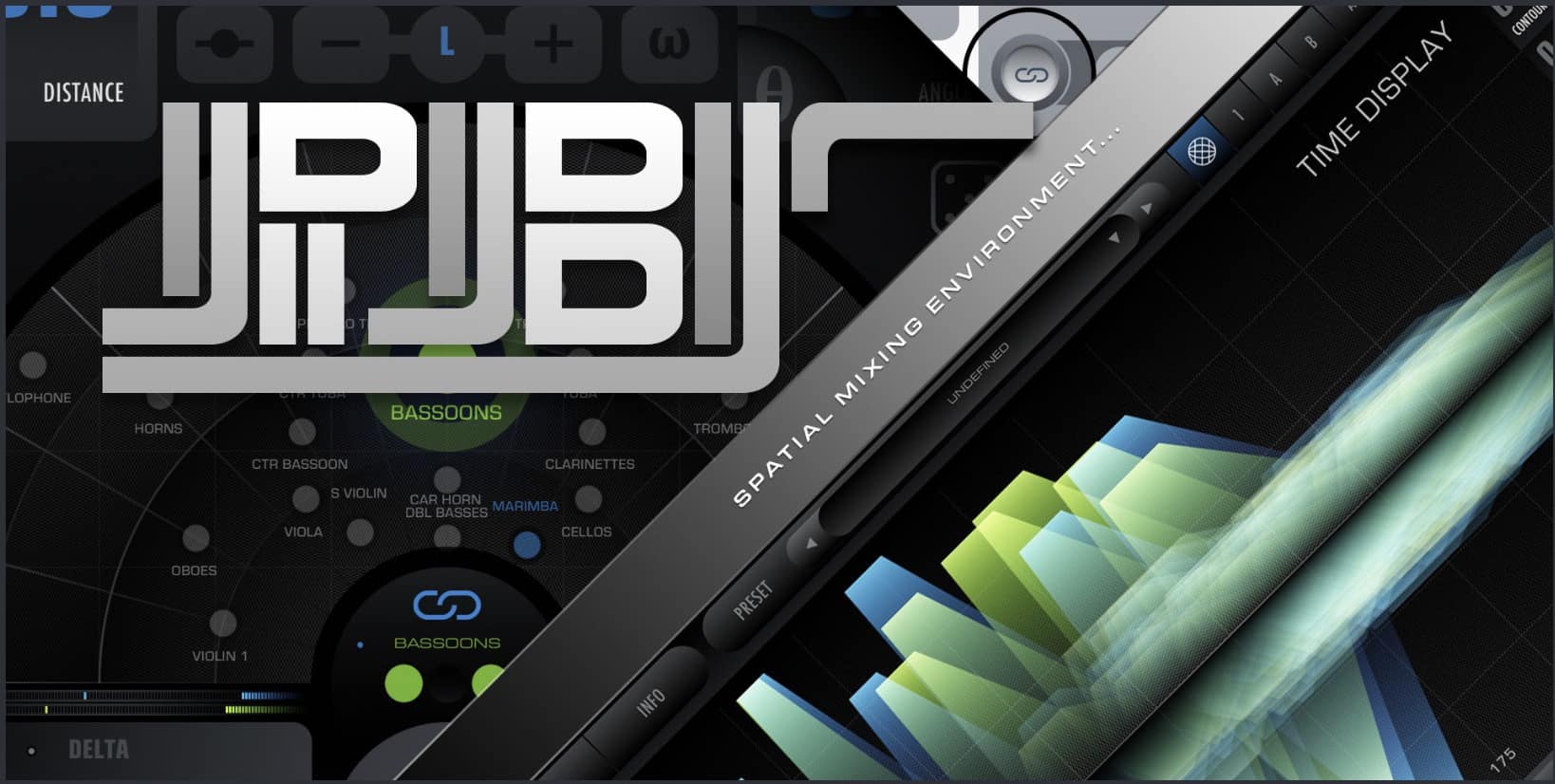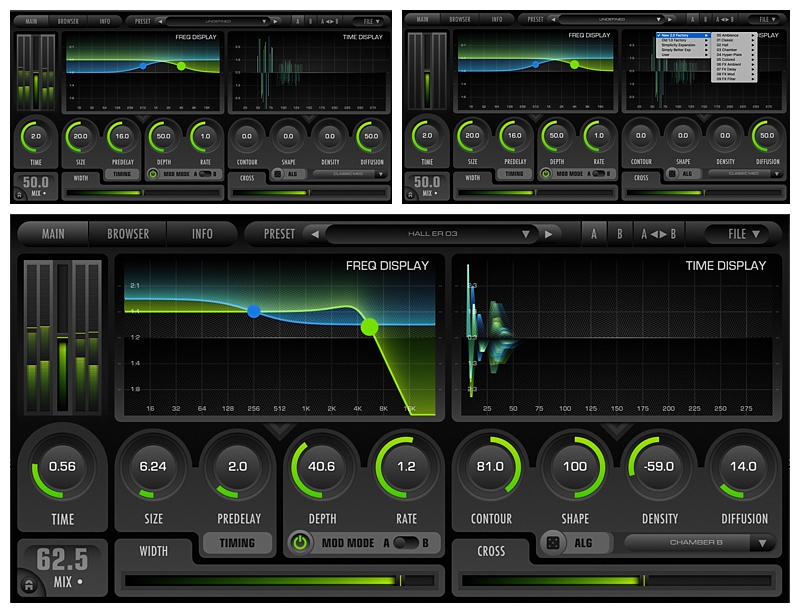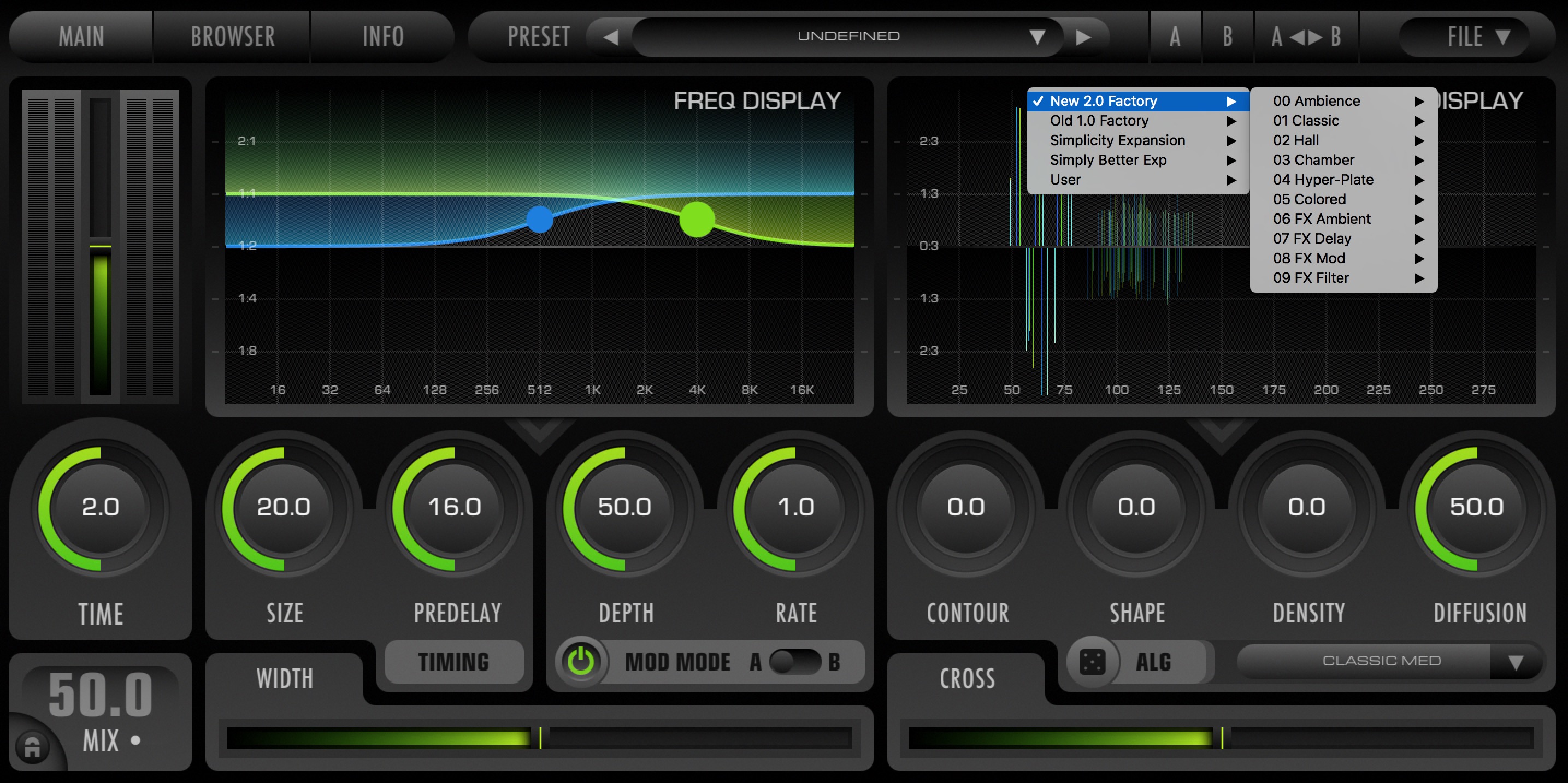PBJ Spatial Mixing Environment, Precedence 1.5 & Breeze 2.5
PBJ SUMMARY

The PBJ Pack is a Spatial Mixing Environment that combines sublime psychoacoustic positioning and industry-leading algorithmic reverb into a unified and intelligently adaptive workflow. It introduces a unique system of multi-instance editing and inter-plugin communication that allows potentially hundreds of linked plug-in instances to function as a unified acoustic space, where each instrument can occupy its own unique position within this cohesive virtual acoustic environment.
Precedence handles the more local and relative perceptual cues while the reverb engine handles more absolute global environmental aspects. Together they synergistically complete the spatial illusion and achieve new levels of realism. Achieving a cohesive spatial mix with individual track separation, definition, and perfect depth placement has never been this easy!
The PBJ Pack is comprised of Precedence 1.5, Breeze 2.5, and 4 Breeze Preset Expansions.
PRECEDENCE 1.5
Precedence 1.5 is a psychoacoustic stereo positioning tool. It creates an organically modulating stereo-image that produces an instantaneous sense of width, depth, and presence similar to stereo microphone techniques used in acoustic spaces. It then positions this image within a virtual stage, giving mix engineers ultra precise control over left-to-right and front-to-back placement. The end result is an incredible sense of hyper-realistic 3D space and specific localization of each instrument within this space.

BREEZE 2.5
Breeze 2.5 is an industry-leading algorithmic reverb that is ultra-efficient, simple to use, and most importantly sounds absolutely sublime. In its most recent version, it has also grown to become one of the most powerful spatial tools on the market! Breeze 2.5 introduces a completely novel Distance-Link DSP mode, where the entire algorithm retunes itself based on instrument position, effectively producing a different set of impulse responses for an infinite number of positions within the virtual room.

PBJ SYSTEM
The PBJ system is a new paradigm in spatial mixing. It pairs direct sound spatialization and positioning with an adaptive multi-instance reverb environment that automatically tunes itself to augment the positional imaging established by Precedence.
The Following features form the basis of the PBJ system

- Link instances of Precedence and Breeze via Inter-Plugin Communication
- Establish a unified spatial environment with Breeze, and use Precedence to place individual tracks within this environment
- Automatically make very complex adjustments to internal Breeze DSP settings simply by changing position information in Precedence
- Achieve never-before-heard levels of realism in-depth and azimuth positioning
- Distance Link DSP mode adjusts automatically adjusts hundreds of internal DSP values within the Breeze Alg in response to changes to the single Distance parameter
- PreDelay, Direct/Reflected Energy Balance and many more parameters become responsive to Distance which can be linked to Precedence
- A single Breeze Preset no longer represents a single position within a space, but rather the entire space with an infinite variety of positions created within this space
- Effectively an Algorithmic equivalent of having infinitely many impulse responses of a given acoustic space

- Manage many instances of Precedence and Breeze within a single GUI window
- Use the Precedence Position Display to visualize position information for all tracks in an Edit Group simultaneously.
- Edit parameter and preset data for any instance within and Edit Group
- Multi-Instance Edits performed in Precedence change linked Breeze Instances as well
- Speed up your workflow and eliminate the need to open and close GUI windows one at a time
EDIT GROUPS
- Organize and Group many instances of Breeze into edit Groups to manage complex sessions
- Allow some instances to work independently without Groups if desired, for send buses
GLOBAL BROADCAST
- Make macro changes en mass to an entire group of 10s or 100s of instances!
- Apply preset and parameter changes to all instances within an Edit Group!
- Change the spatial mixing environment for an entire mix in a single click while maintaining relative track positions
- Change the existing positioning laws in Precedence en masse to adjust spatial contrast in established mixes
- Allow individual variations for each track to enable micro-management of individual track details when needed
- Allow Randomize to create randomized preset variations for an entire group that remain part of the unified space
SELECTION SYNC
Lock multi-instance selections to Precedence to allow Precedence to function as the command center for Multi-Instance mixing
ADDITIONAL NEW FEATURES
- 3 Algorithm Modes in Precedence:
Beta: the default mode providing the most specific positioning using a full set of psychoacoustic principals
Mu: an enhanced mono-compatibility mode for cases where this is a critical concern
Omega: an enhanced diffusive model with extra widening designed for synths and modern FX - Precedence X-Range Loss Mode: allowing more extreme Gain and High-Frequency Loss to exaggerate the sense of distance for use in Post Production SFX
- Precedence Input Channel Swap to more easily align sample libraries that have been recorded In-Situ with the final desired position










